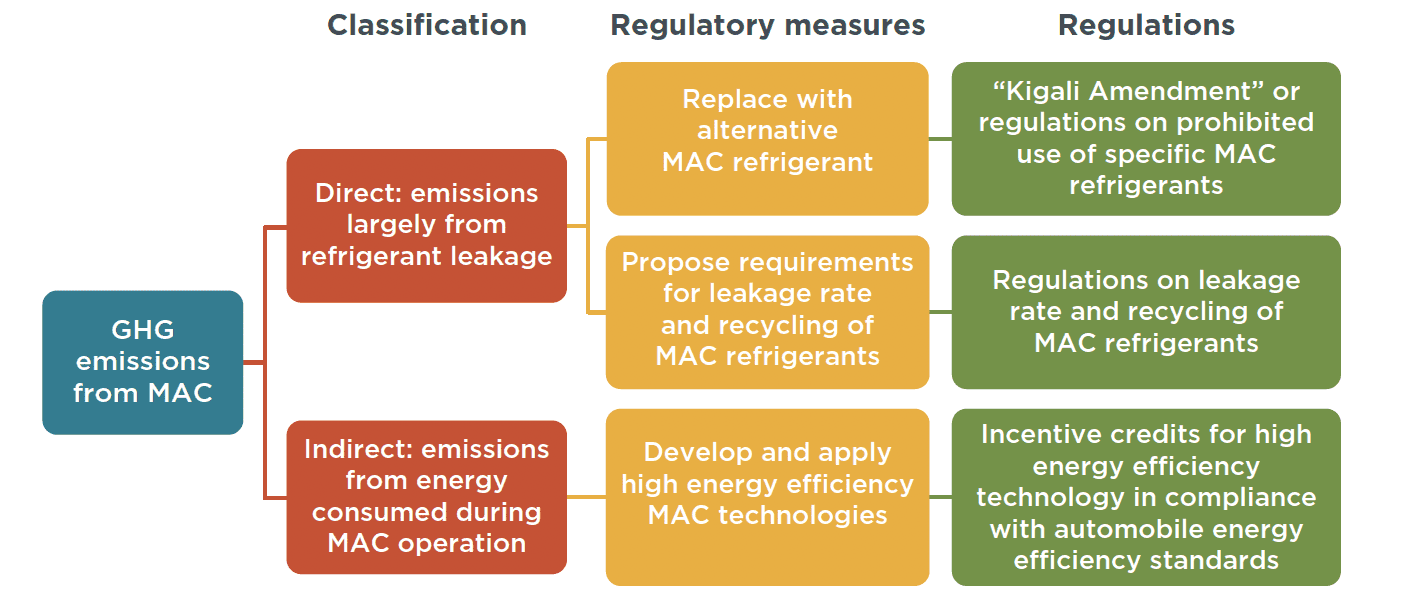Mobile air conditioning system series: Market status and a case study of electric buses in China
Working Paper
Measures for reducing greenhouse gas emissions from motor air conditioning in China
Hydrofluorocarbons (HFCs) used in mobile air conditioning (MAC) and refrigeration equipment are an important contributor to greenhouse gas (GHG) emissions from motor vehicles. Estimates of emissions in China from the MAC refrigerant HFC-134a, conducted by Peking University, shows that they exceed 20 million tonnes of CO2 equivalent per year . In keeping with international efforts to curb GHG emissions it is urgent for China to formulate policies that aim to reduce GHG emissions from MAC.
This report is organized as follows. The first section briefly describes the categories and sources of GHG emissions from MAC. The second section summarizes the measures to reduce GHG emissions from MAC, including the means to improve the MAC energy efficiency. The third section analyzes the development status and challenges of advanced MAC technologies and refrigerants in China through a literature review and market research. The next section summarizes international experience and best practices, focusing on the regulatory systems and policies for reducing GHG emissions from MAC in the United States and Europe. The fifth section summarizes the existing measures and policy gaps in regulating GHG emissions from MAC in China. The last section provides policy recommendations for future regulation of GHG emissions from MAC in China, based on the previous analysis.
Accelerating the development of vehicle models with low-GWP refrigerants will induce Chinese manufacturers to produce vehicles that meet the import standards of other countries. It is an important step for China to enter the ranks of the world’s automotive powers. However, China still faces many challenges in reducing GHG emissions from MAC systems in the auto sector. For example:
- refrigerant replacement needs to be matched with vehicle model development, system matching, and emission verification, so the transition period is long;
- there are additional refrigerant emissions resulting from refrigerant leakage and absence of regulatory measures for refrigerant recycling;
- additional investment is needed because refrigerant replacement requires the transformation of vehicle production lines and maintenance lines;
- the alternative refrigerants and MVC technologies for new energy vehicles (NEV) are not mature.
Based on international experience with MACs and the current situation in China, the report recommends the following policies for regulating GHG emissions from MACs in the auto sector:
- Incorporate MAC information into the motor vehicle environmental protection information disclosure management system, and collect the refrigerant consumption data and AC technology information.
- Develop a MAC emission standard and systematically reduce GHGs and pollutants from MACs.
- Establish the MAC emission regulatory system and strengthen control of MAC emissions throughout life cycle.
- Expedite the development and revision of standards for MAC parts to reduce emissions from MAC units.
- Formulate the economic incentive policies for efficient MACs and accelerate the promotion and application of low-emission MACs.

Figure. Summary of measures for regulating GHG emissions from MAC systems
